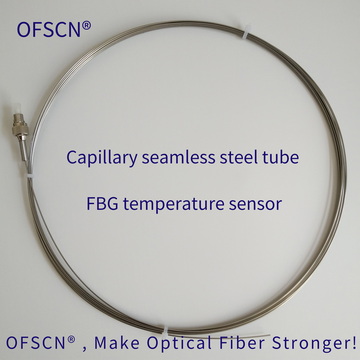Fiber Bragg Grating for Environmental Monitoring - FBG Sensor for Environmental Monitoring - FBG Demodulator for Environmental Monitoring - Application of FBG Sensing Technology in Environmental Monitoring
Fiber bragg grating (FBG) sensing technology has become increasingly popular in the field of environmental monitoring due to its high sensitivity, accuracy, and reliability. The technology involves the use of optical fiber sensors that are inscribed with a periodic modulation of the refractive index along the length of the fiber. These optical fiber gratings act as a transducer that converts environmental changes into measurable optical signals.
Here are some specific applications of fiber bragg grating (FBG) sensing technology in environmental monitoring:
Air Quality Monitoring
Fiber bragg grating (FBG) sensors can detect the concentration of air pollutants such as nitrogen dioxide (NO2), sulfur dioxide (SO2), carbon monoxide (CO), and volatile organic compounds (VOCs). The FBG sensors can be integrated into air quality monitoring stations or mounted on unmanned aerial vehicles (UAVs) for real-time monitoring of air pollution in urban and industrial areas.

Water Quality Monitoring
Fiber bragg grating (FBG) sensors can measure water parameters such as temperature, salinity, pH, dissolved oxygen, and chemical contaminants. The FBG sensors can be deployed in rivers, lakes, and oceans to monitor water quality in real-time.
Structural Health Monitoring
Fiber bragg grating (FBG) sensors can monitor the structural health of bridges, buildings, and other infrastructure. The FBG sensors can detect strain, deformation, vibration, and temperature changes in real-time, providing early warning of potential structural failures.

Geotechnical Monitoring
Fiber bragg grating (FBG) sensors can monitor ground movements, landslides, and subsidence in real-time. The FBG sensors can be deployed in soil, rock, and concrete structures to measure strain, deformation, and temperature changes.

Oil and Gas Monitoring
Fiber bragg grating (FBG) sensors can monitor oil and gas pipelines, wells, and storage tanks for leaks, corrosion, and pressure changes. The FBG sensors can detect small leaks before they become catastrophic, reducing the risk of environmental contamination and safety hazards.

In summary, fiber bragg grating (FBG) sensing technology has diverse applications in environmental monitoring. The technology offers a high level of sensitivity, accuracy, and reliability, making it an attractive option for various monitoring applications in the environmental industry.
